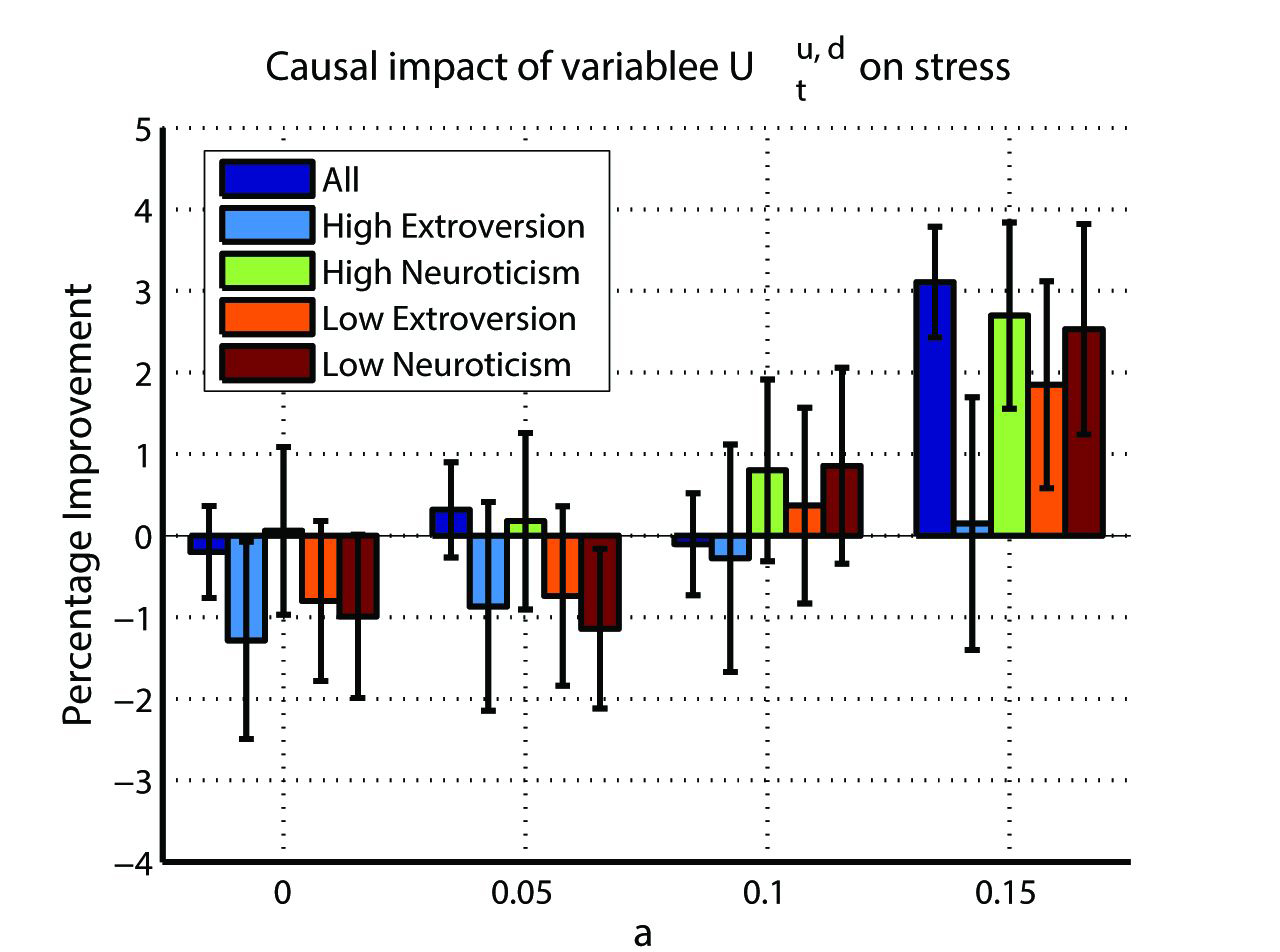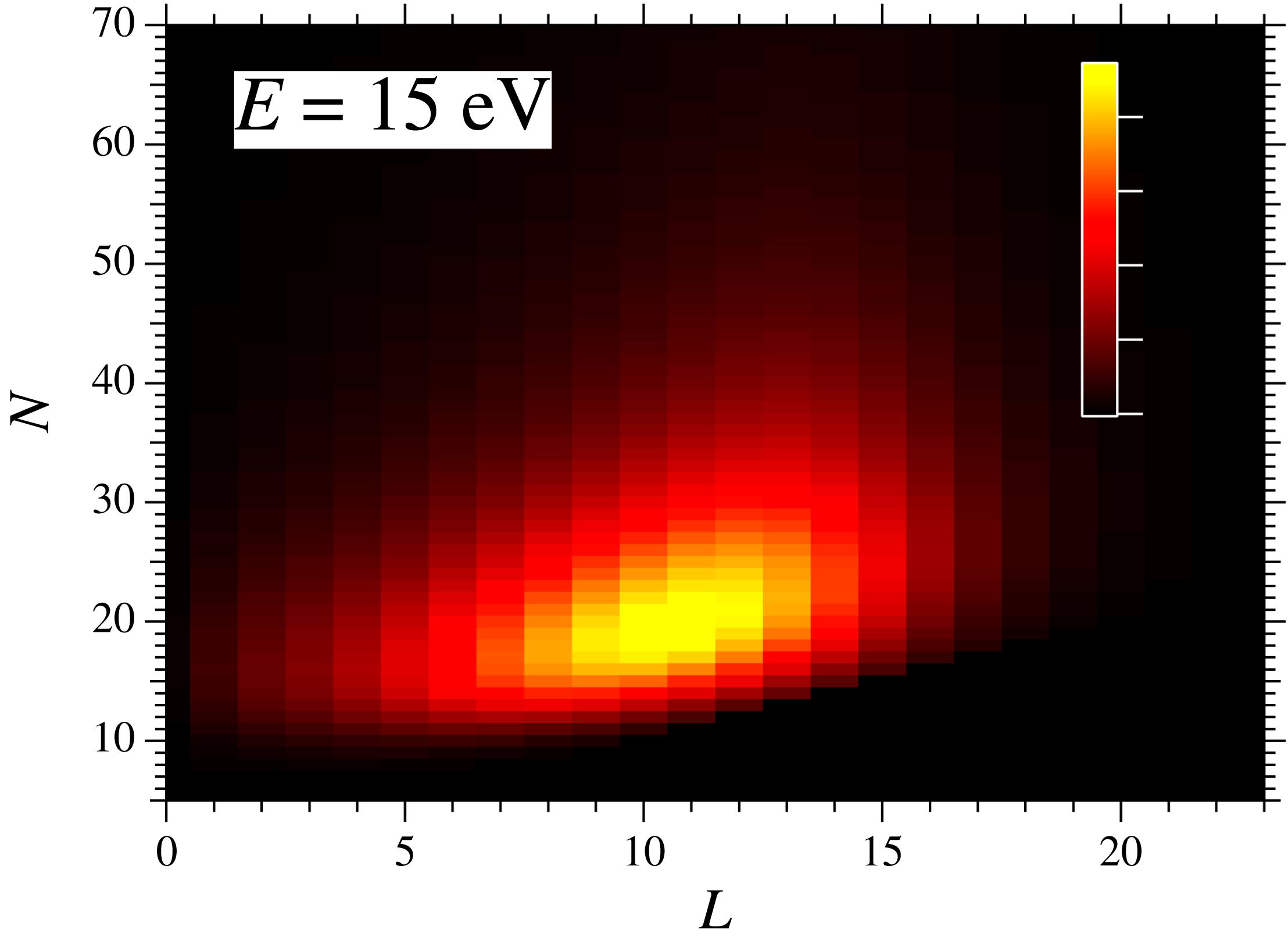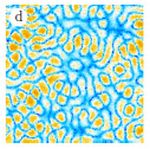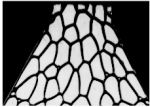News
EPJ Data Science Highlight - Behavioural studies from mobile crowd-sensing
- Details
- Published on 18 December 2015

Smart phone monitoring has become a boon for scientists studying human behaviour and factors influencing stress
Using mobile phones for research is not new. However, interpreting the data collected from volunteers’ own smart phones--which has the potential to emulate randomised trials--can advance research into human behaviour. In a new study published in EPJ Data Science, scientists have just demonstrated the potential of using smart phones for conducting large-scale behavioural studies.The results stem from the work of Fani Tsapeli from the University of Birmingham, UK, and her colleague and Mirco Musolesi from University College London, UK. In their study, they evaluate the cause of increased stress levels of participants using user-generated data, harvested from their phones.
EPJ D Highlight - Recipe for muon pair creation, in theory
- Details
- Published on 15 December 2015

Creation of ephemeral muonium atoms could help measure proton size
A true-muonium only lives for two microseconds. These atoms are made up one positively and one negatively charged elementary particle, also known as muons. Although they have yet to be observed experimentally, a Japanese theoretical physicist has come up with new ways of creating them, in principle, via particle collisions. The first method involves colliding a negatively charged muon and a muonium atom made up of a positive muon and an electron. The second involves colliding a positively charged muon and a muonic hydrogen atom made up of a proton and a negative muon. The author found that the second option offers the most promising advances for muonium detection. These findings have been published in EPJ D by Kazuhiro Sakimoto from the Japan Aerospace Exploration Agency in Kanagawa.
EPJ NBP Highlight - Cancer risk myth debunked
- Details
- Published on 07 December 2015

© tilialucida / Fotolia
Cancer risk debate laid to rest by novel calculations distinguishing population-wide risks for each organ and individual risks linked to environmental and genetic factors
A recent study published in Science by Tomasetti and Vogelstein suggests that variations in terms of cancer risk among tissues from various organs in the body merely amount to pure bad luck. In other words, cancer risk is linked to random mutations arising in the normal course of DNA replication of healthy cells. They also claim that environmental and genetic factors play a lesser role. The scientific community has primarily reacted negatively to this interpretation and promptly refuted it with qualitative arguments and empirical evidence. Joining these voices are Didier Sornette and Maroussia Favre from ETH Zurich, Switzerland, who uncovered the statistical fallacy at the source of the Science paper’s conclusion. The key is to distinguish between individual organ risks and population risks, they wrote in recent correspondence published in EPJ Nonlinear Biomedical Physics. They also contend that the role of genetic and environmental factors must not be underplayed, even if these factors cannot explain differences in cancer rates between different organs.
EPJ H Editor Allan Franklin receives 2016 Abraham Pais Prize for History of Physics
- Details
- Published on 02 December 2015

The Abraham Pais Prize for History of Physics is given annually to recognize outstanding scholarly achievements in the history of physics. Professor Allan Franklin, who is an Editor of EPJ H and author of the Springer book The Rise and Fall of the Fifth Force, receives the 2016 Abraham Pais Prize for History of Physics for "path-breaking historical analyses of the roles of experiment in physics and for explicating the nature of evidence and error in scientific argument".
EPJ D Highlight - Minutest absolute magnetic field measurement
- Details
- Published on 02 December 2015

High-precision and high-accuracy magnetic field measurement to support quest for missing antimatter in the universe
Every measurement is potentially prone to systematic error. The more sensitive the measurement method, the more important it is to make sure it is also accurate. This is key for example in measuring magnetic fields in state-of-the-art fundamental physics experiments. Now, an international team of physicists has developed an extremely high-precision method for the determination of magnetic fields. The resulting device, they found, has an intrinsic sensitivity that makes it ideal for fundamental physics and cosmology experiments attempting to explain the missing antimatter of the universe. The findings by Hans-Christian Koch from the University of Fribourg, Switzerland, and colleagues have just been published in EPJ D.
EPJ B Highlight - Conductor turned insulator amid disorder
- Details
- Published on 02 December 2015

Study analyses how disorder in the way atoms are connected in a material influences electric conductivity
Some materials that are inherently disordered display unusual conductivity, sometimes behaving like insulators and sometimes like conductors. Physicists have now analysed the conductivity in a special class of disordered materials. Martin Puschmann from the Technical University Chemnitz, Germany, and colleagues have demonstrated that electrons in the materials studied display a multifractal spatial structure at the transition between conductive and insulating behaviour. These findings have just been published by in EPJ B.
EPJ B Highlight - Trapping climate pollutant methane gas in porous carbon
- Details
- Published on 01 December 2015

New adsorption of gas into porous carbon simulations are of interest to energy research and climate change mitigation
As talks of global warming are once again making headlines, scientists have renewed their efforts to understand how to best limit its effects. For example, sequestrating short-lived climate pollutants, such as methane and black carbon, yields much faster reductions in global warming compared to reductions in CO2. To do so, it is essential to have a better grasp of the nature of physico-chemical properties of gases interacting with porous carbon. Now, a team of chemical engineering researchers based in South Africa has established ways of accurately simulating methane adsorption and desorption in carbon with nanopores. These findings have been published by Matthew Lasich and Deresh Ramjugernath from the University of KwaZulu-Natal, Durban, South Africa, in EPJ B. Alternative applications for such findings are relevant for future energy research, such as energy storage and the development of natural gas extraction methods.
EPJ ST Highlight - Laser-based accelerators: yes, we CAN!
- Details
- Published on 30 November 2015

Future ultra-fast high power lasers, dubbed Coherent Amplification Network (CAN) lasers, will deliver unprecedented accelerating power and efficiency
Few technologies have the power that particle accelerator technology has to touch upon such a broad range of applications at the many frontiers of modern science. Today, thanks to improvements in laser technology, a new generation of accelerators could soon emerge to replace accelerators relying on radio frequencies. In this new special issue, the journal EPJ Special Topics explores the requirements necessary to make such laser accelerators a reality, by presenting the work of the International Coherent Amplification Network (ICAN) research collaboration. Potential applications include future colliders, solutions for vacuum physics, design of Higgs-particle factories, creation of sources of high-flux protons and of neutrons, among others. Further, such accelerators open the door to solutions in nuclear pharmacology and proton therapy as well as orbital debris remediation.
EPJE Colloquium: Dense granular flows - fluidity revisited
- Details
- Published on 28 November 2015

Bouzid et al.
In this new EPJ E Colloquium, a group of authors from ESPCI, Univ. Paris-Diderot and Univ. P.M. Curie use the interpretive frame-work of non-locality to describe the rheology and fluidity in dense granular flows. Is a “good fitting” of the velocity profiles sufficient to demonstrate the validity of a particular model for non-locality?
EPJ E Highlight - Liquid foam: plastic, elastic and fluid
- Details
- Published on 27 November 2015

Snapshots of the foam at the exit of the convergent channel
What differentiates complex fluids from mere fluids? What makes them unique is that they are neither solid nor liquid. Among such complex fluids are foams. They are used as a model to understand the mechanisms underlying complex fluids flow. Now, a team of French physicists has gained new insights into predicting how complex fluids react under stretching conditions due to the interplay between elasticity, plasticity and flow. These findings were recently published in EPJ E by Benjamin Dollet and Claire Bocher from the Rennes Institute of Physics, in Brittany, France. Ultimately, potential applications include the design of new, optimised acoustic insulators based on liquid forms, or the mitigation of blast waves caused by explosions.




